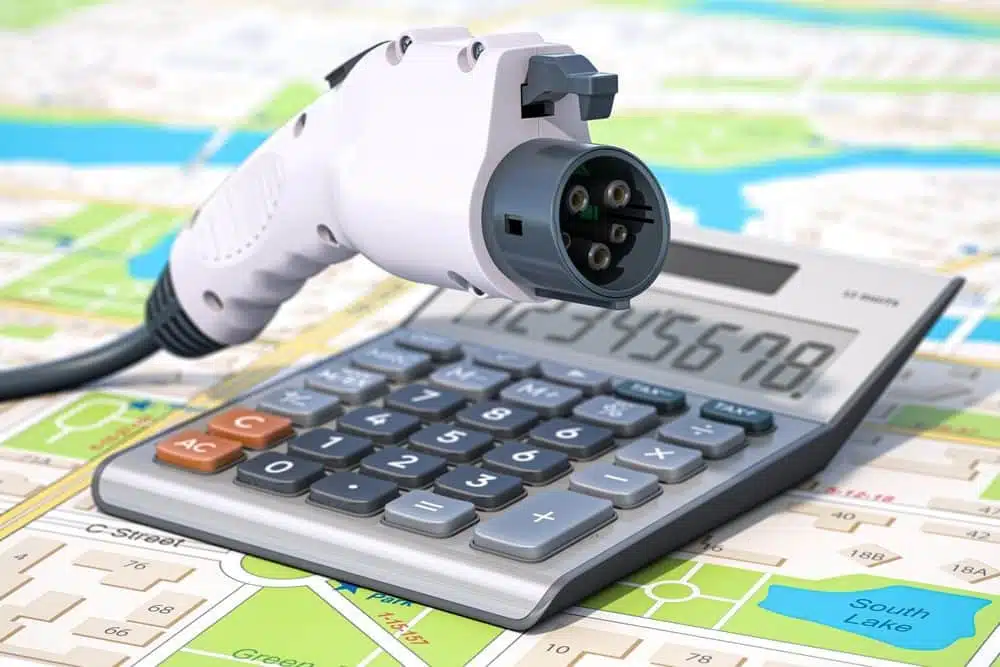Electric Vehicle Tax Credit 2024: A Complete Guide
EVs have become popular because of their environmental benefits and potential cost savings. To encourage the adoption of EVs, the U.S. government offers tax credits to individuals who purchase qualifying electric or plug-in hybrid vehicles. As of 2024, people who buy new electric vehicles may be eligible for a tax credit as high as $7,500, while used EV buyers can qualify for up to $4,000 in tax breaks.
These credits are now available at the point of sale, making it easier for buyers to use the discount directly to lower the upfront cost of their purchase. This comprehensive article will explore the rules and qualifications for claiming the EV tax credit, how the tax credit is calculated, and the steps to claim the credit on your federal income taxes.
What is the Electric Vehicle Tax Credit?
The electric vehicle tax credit, or EV credit, is like a discount the government gives you when you purchase an electric or plug-in hybrid car. It’s not cash back, but it can reduce how much you owe in taxes. You can get a maximum discount of $7,500 for new electric cars. If you buy a used electric car, the discount is up to $4,000, limited to 30% of the sale price, but it can’t exceed that percentage of the car’s price.
In 2024, this discount can be applied immediately at the dealership, making the purchase process more affordable by reducing the upfront cost. This change encourages broader adoption of EVs by removing the need to wait for tax refunds to benefit from the credit.
How the 2024 EV tax credit works
In order to get the updated EV tax credit, your income must meet certain limits, and the vehicle must follow IRS rules, like price and manufacturing requirements. Key updates in 2024 include new sourcing requirements for batteries and critical minerals, stricter income limits, and adjustments to eligibility for new and used EVs.
Used EVs are now eligible.
A major point of contention in the previous iteration of the EV tax credit was its exclusion of used cars. The IRS addresses this issue by introducing changes. Starting in 2024, for the first time, taxpayers can now claim a credit of up to $4,000 for qualifying used EV purchases, limited to 30% of the vehicle’s purchase price.
Price cap
The price cap will remain unchanged from previous years.
- Vans, SUVs, and pickup trucks must have a manufacturer’s suggested retail price (MSRP) of $80,000 or less. Sedans and passenger cars are capped at. Note that MSRP excludes dealer-added taxes and fees when claiming the credit. The new rules also consider buyer income as a criterion for qualifying for the tax credit.
- Sedans and passenger cars are capped at $55,000.
- Used vehicles must be priced at $25,000 or less to qualify for the credit.
The IRS defines MSRP for new vehicles as the base price set by the manufacturer plus the retail cost of accessories.
Income limit
Taxpayers must meet modified adjusted gross income (MAGI) thresholds to qualify for the EV tax credit. The income limits for 2024 are as follows:
- Single filers: MAGI must be $150,000 or less.
- Head of household filers: MAGI must be $225,000 or less.
- Joint filers or those filing as qualifying widows/widowers: MAGI must be $300,000 or less.
If your MAGI exceeds the threshold in one year but is below it in the prior year, you can still qualify using the lower income year.
Battery and Sourcing Requirements
The EV tax credit for 2024 continues to emphasize U.S.-based manufacturing and sourcing, with stricter rules for batteries and critical minerals.
Battery Portion
To qualify for the credit related to the battery, a specific percentage of the vehicle’s battery must undergo assembly or manufacturing within North America. The percentage thresholds for the battery portion are as follows:
- 2024: 60%
- 2025: 60%
- 2026: 70%
- 2027: 80%
- 2028: 90%
- 2029 through 2032: 100%
Sourcing Portion
For the sourcing portion of the credit, the percentage of critical minerals in the car’s battery that must come from the U.S. or countries with free-trade agreements rises to 50% in 2024.
Additionally:
- Starting January 1, 2024, EVs cannot include any battery parts sourced from foreign countries of concern (e.g., China).
- From 2025 onward, EVs cannot contain any critical minerals sourced from foreign countries of concern.
These stricter rules aim to bolster domestic supply chains while maintaining eligibility for credit.
2024 EV Tax Credit Flexibility
F
From January 1, 2024, taxpayers might have the choice to transfer the clean vehicle tax credit to the dealer during the point of sale. This proposal aims to simplify access to the tax break for all eligible consumers, not just those with significant tax liability. By transferring the credit to the dealer, eligible consumers can reduce the vehicle’s cost by the equivalent credit amount or receive a cash equivalent.
Dealerships need to register with Energy Credits Online to participate in the program. This online system helps them confirm if a vehicle meets the eligibility requirements. However, consumers must still ensure they meet the income criteria for the credit. If someone receives the rebate but is later discovered to be ineligible, they’ll have to repay the IRS when filing their tax return.
It’s important to note that the proposal is undergoing a public commentary period, and further guidance from the IRS is expected in the coming months.
Qualifying Vehicles for the EV Tax Credit
To help you determine which vehicles qualify for the EV tax credit in 2024, we have compiled a list of eligible fully electric and plug-in hybrid vehicles. This list is based on information available as of 2024 and may not be exhaustive.
It’s always a good idea to consult the FuelEconomy.gov website for the most up-to-date information on eligible models. You can filter by purchase scenario, model year, and vehicle type and make to determine which car is eligible based on its date of delivery. Here are a few examples:
| Car Make and Model | Tax Credit Amount | MSRP Limit |
| BMW X5 xDrive50e (2024) | $3,750 | $80,000 |
| Cadillac Lyriq (2024) | $7,500 | $80,000 |
| Chevrolet Blazer EV (2024) | $7,500 | $80,000 |
| Chevrolet Bolt (2022-2024) | $7,500 | $55,000 |
| Chrysler Pacifica PHEV (2022-2024) | $7,500 | $80,000 |
| Ford F-150 Lightning (2022-2024) | $7,500 | $80,000 |
| Tesla Model 3 Standard RWD (2024) | $7,500 | $55,000 |
| Volkswagen ID.4 Pro (2023-2024) | $7,500 | $80,000 |
Note: Visit FuelEconomy.gov for the most up-to-date information on vehicle eligibility.
Remember that this list may change, so it’s crucial to confirm whether a particular vehicle is eligible before purchasing.
How to Claim the EV Tax Credit in 2024
To claim the EV tax credit, you must file Form 8936 when you file your federal income taxes. The credit is nonrefundable, meaning it can eliminate or lower taxes owed but will not result in a refund. Here are the steps to claim the EV tax credit:
- Gather the necessary information: Before leaving the dealership with your new EV, make sure you have the following documents to claim the credit on your taxes: Name and (TIN) taxpayer identification number of the seller
- TIN and Name of the taxpayer: Verify the maximum tax credit for which the vehicle is eligible.
- Date of sale and sales price
- The clean vehicle’s vehicle identification number (VIN)
- The clean vehicle’s battery capacity
- A statement declaration from the seller was made under penalty of perjury.
- File Form 8936: Include all the required information on Form 8936, including the vehicle purchase details and the calculated federal tax credit amount.
- Claim the credit on your tax return: If you purchased the vehicle in 2024, include the credit in your 2024 federal tax return.
Additional Incentives and Rebates
In addition to the federal EV tax credit, many states and local governments provide additional incentives and rebates for purchasing electric vehicles. These incentives can further reduce the cost of owning an EV and vary by location. For example, California’s Clean Air Vehicle program grants carpool lane access to select electric vehicles.
New York extends a state-level rebate of up to $2,000 in addition to the federal tax credit. It is important to note that certain requirements need to be met for battery components of electric vehicles, such as anodes, cathodes, and electrolytes, to be manufactured or assembled in North America. Additionally, battery components cannot come from companies controlled by China, starting this year.
Researching and exploring the incentives and rebates available in your area is important to maximize your savings when purchasing an electric vehicle. However, be aware of any restrictions on claiming multiple incentives to avoid double-dipping.
Leasing and the EV Tax Credit
While individual consumers cannot directly claim the EV tax credit when leasing an electric vehicle, the dealer may pass down potential savings. Leased cars are considered commercial vehicles owned by the businesses that purchase them, such as dealerships and leasing agencies. These businesses can qualify for a different type of tax credit, known as the commercial vehicle tax credit.
The commercial vehicle tax credit is more flexible than the individual EV tax credit, enabling businesses to qualify for incentives on a broader range of eligible electric vehicles, including those not made in the U.S. Dealerships, though receiving the tax credit, can lower leasing costs for the lessee by the credited amount.
Additionally, automakers are adjusting their supply chains to ensure buyers continue to be eligible for the new clean vehicle credit, partnering with allies and bringing jobs and investment back to the United States.
Note that dealerships aren’t obligated to discount leases, so negotiating may be necessary to realize potential savings. Also, it’s crucial to assess the transparency of any lease claiming to pass down savings and thoroughly research leasing options before deciding.
Conclusion
The 2024 EV tax credit allows businesses and individuals to reduce electric vehicle purchase costs. With used EVs included and higher credit amounts for new ones, more people can benefit, contributing to a greener future. Understand eligibility, vehicle specs, and the claiming process for an informed decision and maximum savings. Consult a certified tax professional for personalized guidance, and enjoy the perks of owning an electric vehicle while supporting sustainability.
FAQs
What is the electric vehicle tax credit, and how does it work?
The electric vehicle tax credit is a federal tax credit available to individuals who purchase new electric vehicles. It works by reducing the amount of taxes owed to the IRS by the credit amount, which varies depending on the vehicle’s battery capacity and manufacturer.
How much money can I save with the electric vehicle tax credit?
The electric vehicle tax credit allows you to save up to $7,500 on your federal income tax return. The credit amount varies based on the battery capacity used in the vehicle. It’s important to check with the IRS and consult a tax professional for specific details and eligibility requirements.
Can I get the electric vehicle tax credit if I lease an electric car?
Yes, you can still qualify for the electric vehicle tax credit if you lease an electric car. However, in most cases, the tax credit goes to the leasing company, which then factors into your lease payments. It’s always best to consult with a tax professional for specific eligibility and requirements.
Is there a limit to how often I can claim the electric vehicle tax credit?
No, there is no limit to how many times you can claim the electric vehicle tax credit. As long as you meet the eligibility criteria for each tax year, you can claim the credit for each electric vehicle you purchase during that time.
Do Used EVs Qualify for a Tax Credit?
No, used electric vehicles do not qualify for the federal tax credit. The tax credit is only available for new electric vehicle purchases. However, there may be state or local incentives for used electric vehicles, so it’s worth checking with your local government or tax authority.







